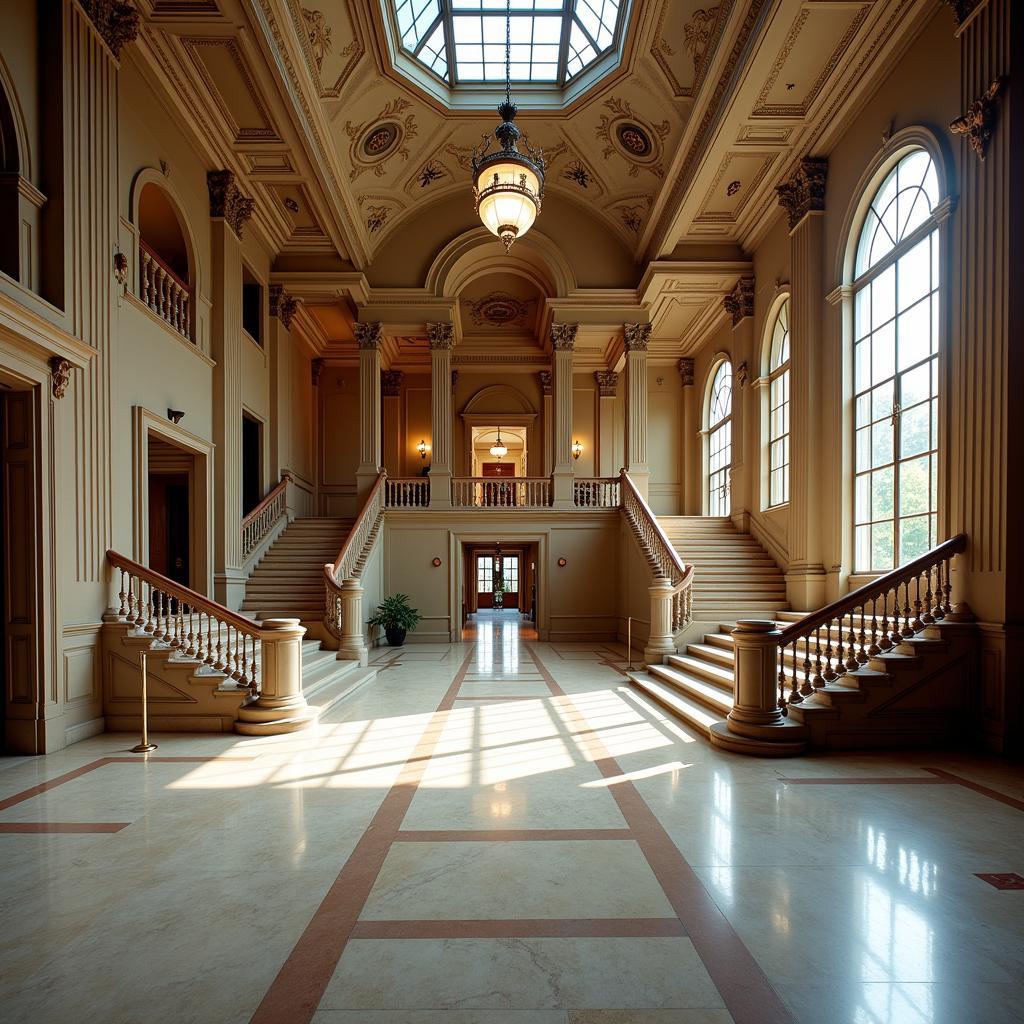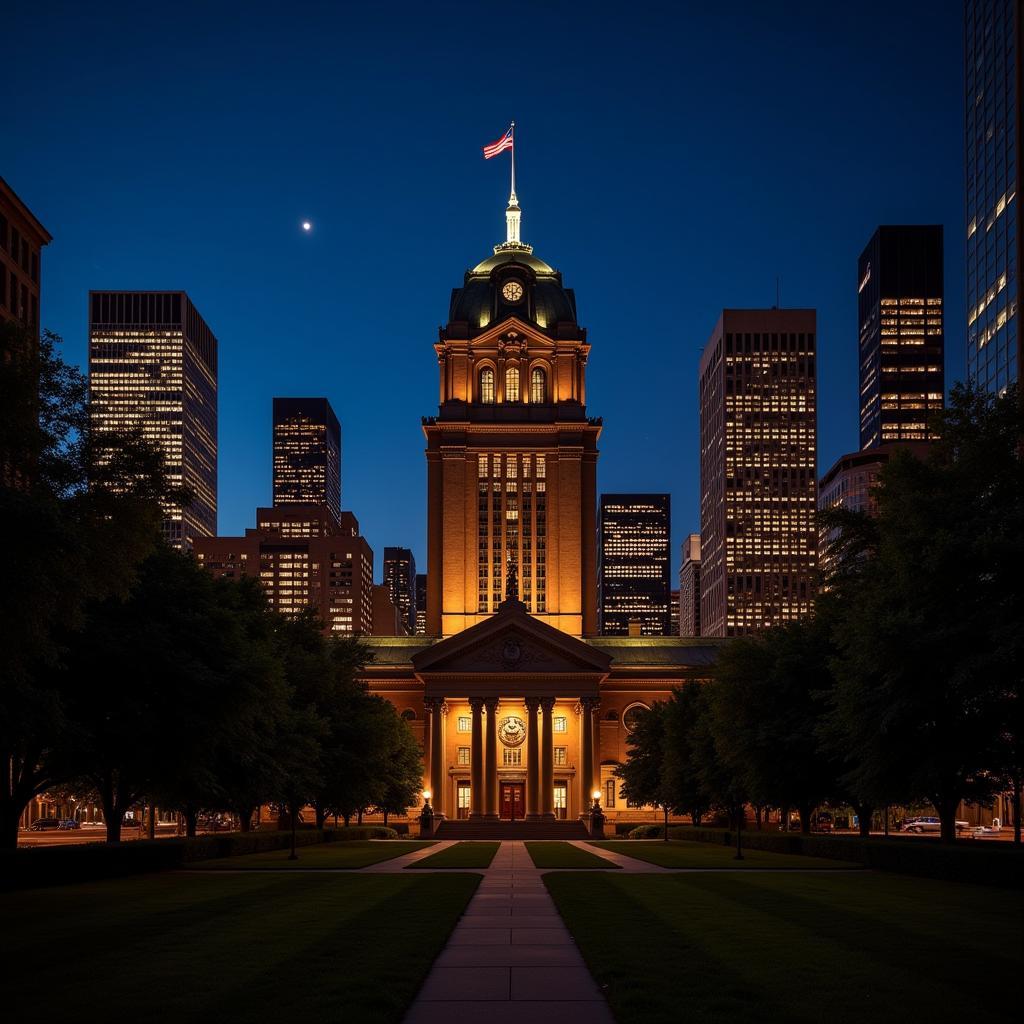The Former Chicago Historical Society Building, a grand dame of Chicago architecture, stands as a testament to the city’s rich past and enduring spirit. While no longer housing historical artifacts, its imposing presence continues to captivate visitors and locals alike. This article delves into the building’s architectural splendor, its transformation, and its symbolic connection to the pursuit of peace.
A Glimpse into Architectural Grandeur
Designed by the renowned architectural firm of Shepley, Rutan & Coolidge, the former Chicago Historical Society building boasts a captivating blend of styles, with prominent influences of Italian Renaissance and Beaux-Arts. Constructed between 1892 and 1896, the building’s elaborate facade, featuring intricate carvings and sculptures, reflects the opulence and ambition of the era.
Upon entering the building, visitors were greeted by a grand staircase, its marble steps leading to a series of elegant exhibition halls. The building’s interior was equally impressive, with ornate ceilings, stained glass windows, and intricate woodwork, creating an ambiance of grandeur and reverence for history.
A New Chapter: Transformation and Adaptive Reuse
In 1932, the Chicago Historical Society relocated to its current location in Lincoln Park. The former building found a new purpose as the home of the Excalibur and Chicago Joe’s restaurants, showcasing the adaptability of historic structures. The restaurants, though now closed, carefully preserved the building’s architectural integrity, ensuring that its legacy lived on.
 Former Chicago Historical Society Building Interior
Former Chicago Historical Society Building Interior
The adaptive reuse of the former Chicago Historical Society building exemplifies the power of preserving history while embracing progress. It serves as a reminder that our past can continue to enrich our present and inspire future generations.
A Beacon of Peace: Connecting Past and Present
Beyond its architectural magnificence, the former Chicago Historical Society building stands as a symbol of peace. Its history, though rooted in the past, resonates with the timeless human desire for understanding and harmony.
“Buildings like the former Chicago Historical Society remind us that even amidst change, our shared human story continues,” notes Dr. Emily Carter, architectural historian and author of “Adaptive Reuse: Breathing New Life into Historic Structures.” “They become spaces where we can reflect on the past, connect with the present, and envision a more peaceful future.”
 Former Chicago Historical Society Building Night View
Former Chicago Historical Society Building Night View
The building’s location in the heart of Chicago, a city known for its diversity and cultural vibrancy, further underscores its connection to the ideals of peace. It stands as a testament to the power of inclusivity and the importance of fostering dialogue and understanding among different communities.
Conclusion
The former Chicago Historical Society building, with its architectural grandeur and rich history, serves as a reminder of the enduring power of the past. Its transformation and adaptive reuse exemplify the potential for preserving history while embracing progress. More importantly, the building stands as a symbol of peace, connecting our shared human story and inspiring us to build a more harmonious future.
FAQs
1. What is the architectural style of the former Chicago Historical Society building?
The building showcases a captivating blend of Italian Renaissance and Beaux-Arts styles.
2. When was the building constructed?
The construction took place between 1892 and 1896.
3. What is the building currently used for?
While the Excalibur and Chicago Joe’s restaurants previously occupied the space, the building is currently awaiting its next chapter.
4. Who designed the building?
The renowned architectural firm of Shepley, Rutan & Coolidge designed the building.
5. Why is the building considered a symbol of peace?
Its history, rooted in preserving the past, resonates with the human desire for understanding and harmony. Its location in diverse Chicago further strengthens this symbolism.
6. Are there guided tours of the building?
Details about tours and access can vary, so it’s best to check with local resources for the most up-to-date information.
7. Can you tell me more about the building’s connection to peace initiatives in Chicago?
The building’s presence inspires reflection on historical progress and the ongoing pursuit of a more peaceful world.
For further assistance, please contact:
Phone Number: 02043854663
Email: [email protected]
Address: Khu 34, Bắc Giang, 260000, Việt Nam
Our dedicated customer support team is available 24/7 to assist you.